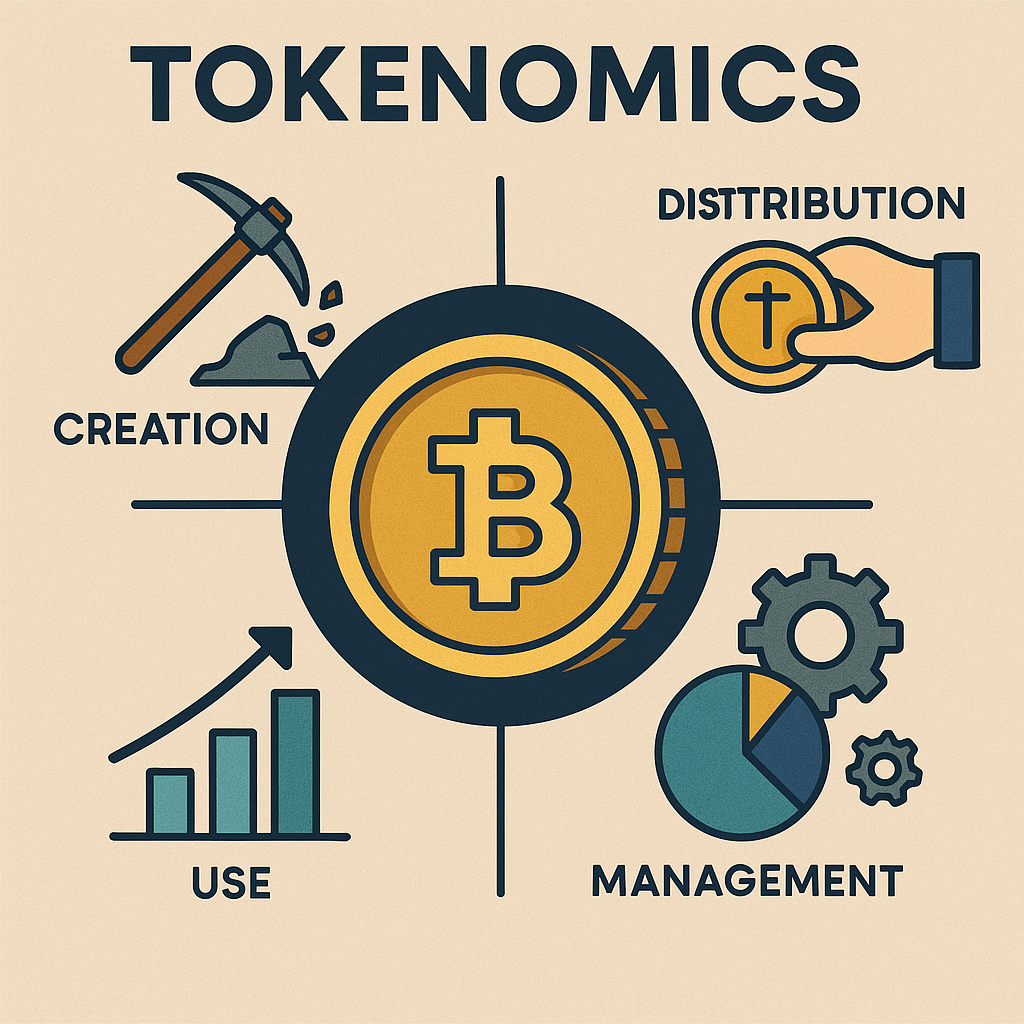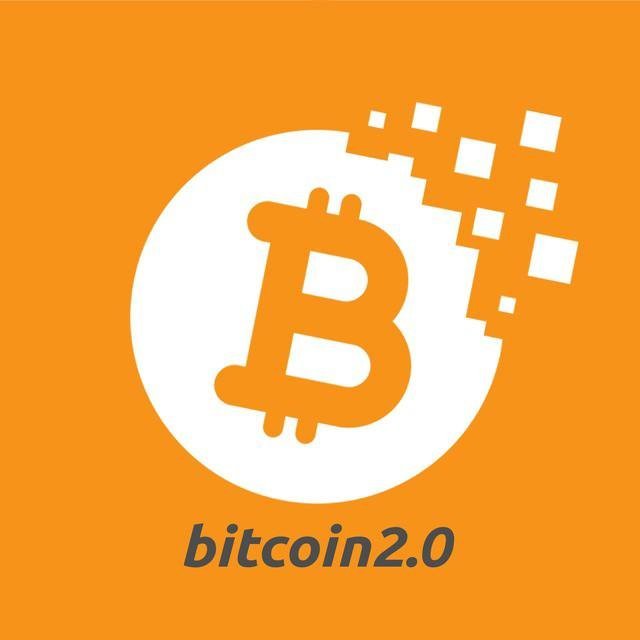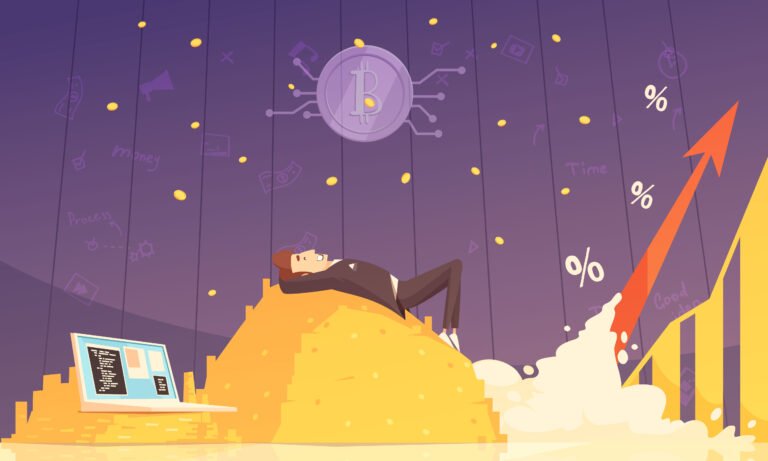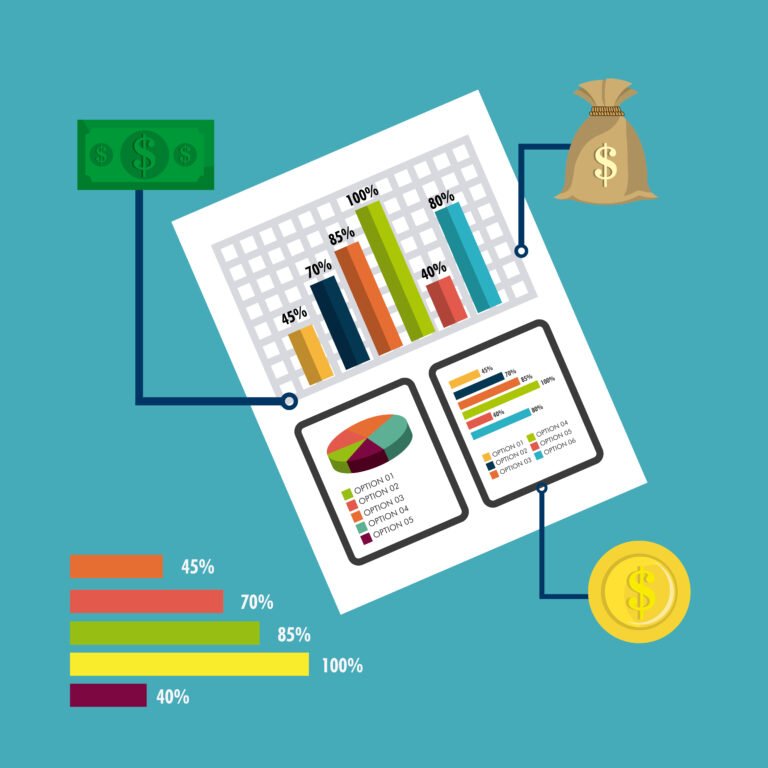What Is Tokenomics? A Complete Beginner’s Guide (2025)
1. What Is Tokenomics?
Tokenomics — a blend of token and economics — refers to the study of the economic structure, logic, and incentives behind a cryptocurrency or blockchain-based token. It explains how tokens are created, distributed, managed, and used within a given ecosystem. Just like traditional economies rely on monetary policies and supply-demand principles, crypto tokens operate on their own set of economic rules.

Table of Contents
In simple terms, tokenomics defines the rules that govern a crypto token’s behavior, including its supply limit, distribution strategy, and how holders are incentivized to participate in the network.
Why Tokenomics Matters in Crypto Projects
In the fast-moving world of cryptocurrencies, flashy websites and hype can be deceiving. What truly separates a strong crypto project from a weak one is well-designed tokenomics.
Whether you’re a developer, investor, or crypto enthusiast, understanding tokenomics helps you:
- Evaluate project sustainability
Poor tokenomics can lead to inflation, dumps, or long-term failure. - Assess long-term value potential
Tokens with clear utility and scarcity are more likely to succeed. - Avoid scams and Ponzi-like projects
Projects with vague or unsustainable tokenomics often raise red flags.
2. Key Components of Tokenomics
Understanding tokenomics means breaking down its core building blocks. These components define how a crypto token operates, how it’s distributed, and what gives it value.
2.1 Token Supply Models
The supply of a token plays a huge role in its price potential and market behavior.
• Total Supply vs Circulating Supply
- Total Supply: The maximum number of tokens that will ever exist.
- Circulating Supply: The number of tokens currently available and traded on the market.
A large gap between total and circulating supply could mean future inflation if locked tokens are released suddenly.
• Fixed Supply vs Inflationary/Deflationary Models
- Fixed Supply: Limited number of tokens (e.g., Bitcoin’s 21 million cap).
- Inflationary: Tokens are continuously minted (e.g., Dogecoin).
- Deflationary: Tokens are burned over time to reduce supply (e.g., BNB burn mechanism).
2.2 Token Allocation
Allocation determines who gets the tokens and when.
• Common Allocation Buckets:
- Team and Founders
- Investors (Seed, Private, Public)
- Advisors
- Treasury
- Community / Airdrops / Staking Rewards
• What Is a Fair Launch?
A fair launch means no tokens are pre-mined or given to insiders — everyone has equal access at launch (e.g., Bitcoin, Yearn Finance).
2.3 Utility and Use Cases
A token’s real-world utility is key to long-term adoption.
- Governance: Voting rights on protocol changes (e.g., UNI, AAVE)
- Utility: Used within the platform (e.g., gas fees, payments)
- Security Tokens: Represent shares or ownership (subject to regulation)
- Meme or Community Tokens: Driven by hype and culture (e.g., SHIBA, PEPE)
2.4 Incentives and Rewards
Well-designed tokenomics incentivize users to contribute to the ecosystem.
- Staking: Lock tokens to earn rewards and secure the network.
- Yield Farming: Provide liquidity and get rewarded.
- Liquidity Mining: Earn tokens by supplying liquidity to DEXs.
- Burn Mechanisms: Reduce supply to increase value.
3. Common Token Distribution Models
How tokens are distributed after launch significantly affects a project’s decentralization, trust, and market behavior. Token distribution models define who gets the tokens, how many, and when — all critical for long-term sustainability and price stability.
3.1 ICO, IDO, IEO – What’s the Difference?
These are common methods projects use to raise funds and distribute tokens to early users and investors:
- ICO (Initial Coin Offering)
The original fundraising model. Projects sell tokens directly to investors via their own website, often with little regulatory oversight. - IDO (Initial DEX Offering)
Tokens are launched on decentralized exchanges (DEXs) like Uniswap or PancakeSwap. It’s permissionless, fast, and popular with DeFi projects. - IEO (Initial Exchange Offering)
Conducted on centralized exchanges (e.g., Binance Launchpad), offering more security and vetting but often higher listing requirements.
Each model has different implications for token allocation, access, and centralization.
3.2 Vesting Schedules and Lockup Periods
To prevent dumping and encourage long-term commitment, many projects use vesting schedules.
- Vesting Schedule: Gradual release of tokens over time to team or investors.
- Cliff Period: A period before any tokens can be claimed (e.g., 6-12 months).
- Lockup Period: Tokens are fully locked and cannot be traded or withdrawn.
These mechanics help stabilize token prices and ensure accountability.
3.3 Airdrops and Community Incentives
Projects often distribute tokens for free or through participation to build communities and decentralization.
- Airdrops: Free token distribution to wallets, often for promotional purposes or as a reward to early users (e.g., Uniswap’s UNI airdrop).
- Community Rewards: Tokens given for activities like referrals, social sharing, testnet participation, or contributing to governance.
These methods can be effective for decentralized growth — but if poorly designed, may lead to short-term sell-offs.
4. Token Valuation Factors
The value of a crypto token isn’t just about hype — it’s deeply tied to its tokenomics design. This section covers how tokenomics influences a token’s market value, investor confidence, and long-term performance.
4.1 How Tokenomics Affects Price
The structure of a token’s supply, distribution, and utility directly impacts its price in the market.
- High circulating supply with low demand often leads to price dilution.
- Low supply + high demand can create price appreciation — especially if there’s real utility.
In short, well-designed tokenomics create scarcity + utility, which drives value.
4.2 Scarcity and Demand
One of the most powerful tools in tokenomics is creating perceived or real scarcity.
- Fixed Supply Tokens (like Bitcoin) are often valued more over time due to increasing scarcity.
- Burn Mechanisms (like BNB’s quarterly burn) reduce total supply, increasing price pressure.
- High-demand use cases (e.g., ETH for gas) increase buying pressure and circulation.
The economic model should always answer: Why would someone want to hold this token?
4.3 Network Utility and Adoption
A token’s real-world usage is a major determinant of value:
- Is it needed to use the platform? (e.g., Filecoin for storage, ETH for gas)
- Does it offer staking rewards or governance rights?
- Are developers building on it or integrating it into dApps?
Tokens with strong network effects and ecosystem growth typically hold long-term value.
4.4 Token Velocity and Market Behavior
Token velocity refers to how often a token is used or traded in the economy.
- High velocity = tokens frequently change hands = less value retention.
- Low velocity = tokens are held/staked = potentially higher price floor.
Successful projects often design incentives to reduce token velocity, encouraging users to hold rather than sell (e.g., staking rewards, governance roles).
5. Real-World Examples of Tokenomics
Understanding tokenomics becomes clearer when you see how it’s applied in real-world projects. Let’s break down how some major cryptocurrencies design their token economies and what makes them effective.
5.1 Ethereum ($ETH): Utility and Burn Mechanism
- Use Case: $ETH is used to pay gas fees for transactions and smart contracts on the Ethereum network.
- Tokenomics Features:
- EIP-1559 introduced a burn mechanism that destroys a portion of ETH with every transaction.
- No hard cap, but deflationary pressure from burning balances supply growth.
- Effect: ETH has evolved into a deflationary asset during periods of high network activity.
5.2 Binance Coin ($BNB): Deflation Through Burns
- Use Case: Used on Binance for trading fee discounts, in BNB Chain dApps, and more.
- Tokenomics Features:
- Quarterly burns until 50% of total supply is destroyed.
- Strong ecosystem integration increases demand.
- Effect: Deflation + utility = long-term price support and increased investor confidence.
5.3 Solana ($SOL): Proof-of-Stake and Fees
- Use Case: SOL powers the Solana blockchain and pays for fast, low-cost transactions.
- Tokenomics Features:
- Staking rewards for validators.
- Small portion of fees are burned.
- Inflationary, but with controlled supply increase.
- Effect: Balances network incentives with moderate inflation and high throughput.
5.4 Uniswap ($UNI): Governance and Decentralization
- Use Case: UNI holders vote on governance proposals.
- Tokenomics Features:
- No utility beyond governance (yet), but strong community involvement.
- Large portion allocated to team and investors, with a vesting schedule.
- Effect: Maintains long-term interest from users, though future utility could increase demand.
5.5 Shiba Inu ($SHIB): Meme Token with Community Power
- Use Case: Initially none, now expanding to include NFTs, a metaverse, and staking.
- Tokenomics Features:
- Massive total supply, but a significant portion was burned by sending it to a dead wallet.
- Community-driven with high trading volume and speculative interest.
- Effect: Proves that tokenomics and community narrative can together create huge value — even without a traditional use case.
6. Tokenomics and Regulation
As the crypto space evolves, regulatory scrutiny is tightening — and tokenomics is often at the center of the conversation. The way a token is designed can determine whether it’s classified as a utility token, a security, or even something else entirely.
6.1 Legal Considerations in Token Design
When crafting a token’s structure, projects must consider:
- Jurisdiction: Regulations vary widely by country (e.g., U.S. SEC vs EU MiCA).
- Purpose of the Token: Is it used for utility within a platform or as an investment?
- Investor Protections: Are there mechanisms to prevent pump-and-dump schemes or insider sell-offs?
Failing to consider these can lead to legal action, delistings, or bans from major exchanges.
6.2 Utility vs Security Tokens
The difference between a utility and security token is crucial:
- Utility Token: Provides access to a product or service (e.g., ETH for gas, FIL for storage).
- Security Token: Represents an investment in a project, often with profit-sharing or equity-like rights.
If a token is deemed a security, it must comply with financial regulations — including registration, KYC/AML, and investor disclosures.
🧠 The Howey Test
Used in the U.S. to determine if a token is a security. If investors expect profits primarily from others’ efforts, it might be a security.
6.3 Compliance Trends in 2025
In 2025, we’re seeing more focus on:
- Transparent tokenomics: Clear emission schedules, vesting, and distribution disclosures.
- KYC-friendly launches: Especially on centralized exchanges or IDO platforms.
- Audit requirements: Both technical (smart contract) and economic (tokenomics) audits are becoming standard.
- Real-world backing: Stablecoins and asset-backed tokens are under stricter regulatory oversight.
Bottom Line:
Projects that build regulatory-friendly tokenomics are more likely to gain long-term trust from investors, listing partners, and regulators.
7. Red Flags and What to Watch For
Not all tokenomics are created equal. In fact, some are designed to mislead investors or artificially inflate token value. As a beginner or even experienced investor, it’s crucial to recognize red flags that indicate poor or risky tokenomics.
7.1 Unsustainable Token Emissions
If a project is printing too many tokens too quickly, it leads to inflation and price crashes.
- 🚨 Red Flag: Extremely high annual inflation rates (e.g., >100%)
- 💡 Tip: Look for emission schedules that taper over time or align with real growth
7.2 High Insider Allocation
When the majority of tokens are reserved for founders, investors, or team members, it raises concerns about decentralization and sell pressure.
- 🚨 Red Flag: >50% of supply held by insiders or unlocked too early
- 💡 Tip: Check for fair vesting schedules and community-focused distribution
7.3 No Real Utility
Tokens with no use case beyond hype or speculation often fail long term.
- 🚨 Red Flag: “Community token” with no roadmap, use case, or ecosystem
- 💡 Tip: Ask: Why does this token need to exist?
7.4 Vague or Hidden Vesting Information
If a project doesn’t clearly explain when and how tokens unlock, it may be hiding dump risks.
- 🚨 Red Flag: No vesting details in whitepaper or tokenomics docs
- 💡 Tip: Transparency = Trust. Demand detailed unlock schedules.
7.5 Overreliance on Burns or Buybacks
Burning tokens can be valuable — but some projects overemphasize burns without creating real demand.
- 🚨 Red Flag: Burn = marketing gimmick, not backed by utility or revenue
- 💡 Tip: Burns should complement utility, not replace it
7.6 Poor Community Incentive Structure
If users aren’t properly incentivized to hold, participate, or contribute, the project may stagnate.
- 🚨 Red Flag: No staking, no governance, no ecosystem rewards
- 💡 Tip: Good tokenomics aligns user behavior with project growth
8. Conclusion
The Future of Tokenomics in Crypto
As the crypto space matures in 2025, tokenomics has evolved from a technical detail into a core pillar of project success. No longer can developers rely on hype alone — investors, users, and regulators are demanding clear, sustainable, and transparent economic models.
Good tokenomics can:
- Attract long-term holders and contributors
- Support healthy price dynamics
- Enable fair participation across the ecosystem
- Reduce risk of collapse from inflation or insider dumps
On the other hand, poor tokenomics often signal short-term thinking, misaligned incentives, or even outright scams.
Final Thoughts for New Investors
Before investing in any crypto project, always ask:
✅ What is the token’s purpose?
✅ How is it distributed and released over time?
✅ Who benefits most from the tokenomics design?
✅ Is the model sustainable and growth-oriented?
Understanding tokenomics isn’t just for developers or economists — it’s essential knowledge for anyone navigating the crypto markets today.
Read Also: Top 10 Crypto Projects with Strong Tokenomics (2025)






